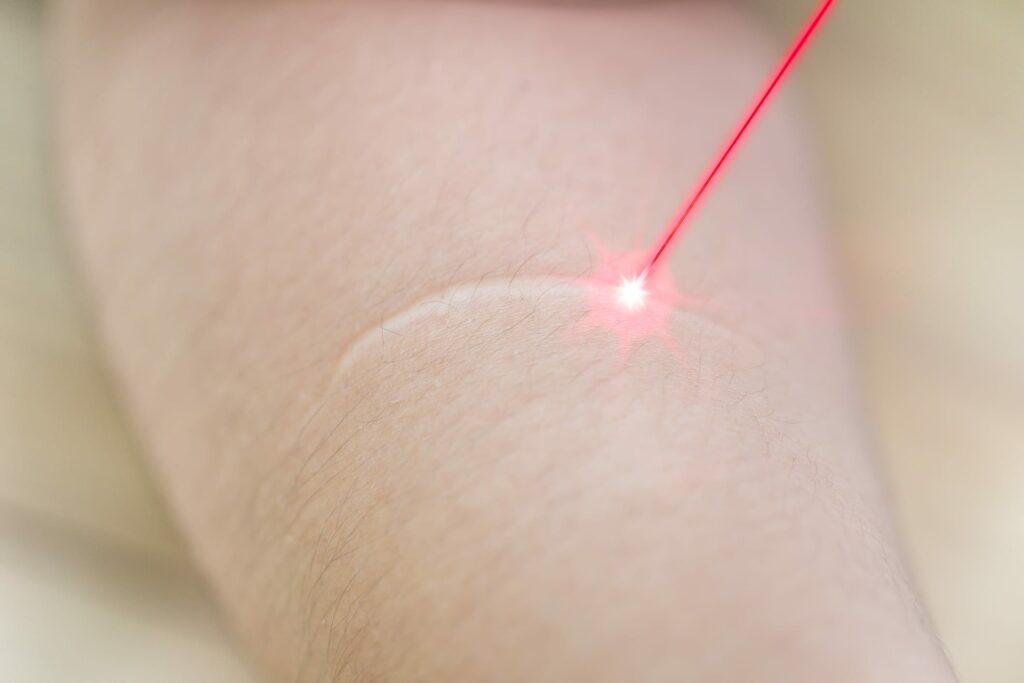Laser therapy in dermatology is expanding, offering new treatments for conditions ranging from acne scars to vascular lesions.
Laser therapy has become a cornerstone in dermatology, offering a versatile and effective approach to treating a wide range of skin conditions.
From cosmetic enhancements to medical treatments, lasers have improved dermatologists’ ability to address patient needs. This article explores the expanding role of laser therapy in dermatology, highlighting its applications, benefits, and future potential.
The Rise of Laser Therapy in Dermatology
Laser therapy, which stands for Light Amplification by Stimulated Emission of Radiation, has seen significant advancements since its inception. The technology leverages focused light beams to target specific skin issues, providing precise and controlled treatment.
This precision has made lasers an invaluable tool in dermatology, allowing for minimally invasive procedures with reduced recovery times.
Applications of Laser Therapy

- Cosmetic Dermatology
- Skin Rejuvenation: Lasers are widely used for skin resurfacing, reducing wrinkles, fine lines, and age spots. Fractional lasers, such as CO2 and erbium lasers, create micro-injuries that stimulate collagen production and promote smoother, younger-looking skin.
- Hair Removal: Laser hair removal is a popular cosmetic procedure that provides long-term reduction of unwanted hair. It works by targeting the melanin in hair follicles, effectively reducing hair growth over multiple sessions.
- Tattoo Removal: Q-switched lasers are specifically designed to break down tattoo pigments, making it easier to remove tattoos with minimal scarring.
- Medical Dermatology
- Acne and Acne Scars: Lasers can treat active acne by targeting the bacteria responsible for breakouts and reducing sebaceous gland activity. Additionally, lasers help improve the appearance of acne scars by promoting collagen remodeling.
- Vascular Lesions: Conditions like spider veins, rosacea, and hemangiomas can be effectively treated with vascular lasers. These lasers selectively target blood vessels, reducing redness and improving the appearance of the skin.
- Pigmented Lesions: Hyperpigmentation, melasma, and other pigmented lesions can be addressed with laser therapy. By targeting melanin, lasers can lighten these spots and even out skin tone.
Benefits of Laser Therapy

Laser therapy offers several advantages over traditional dermatological treatments:
- Precision: Lasers provide high precision, targeting only the affected areas while sparing surrounding healthy tissue.
- Minimally Invasive: Many laser procedures are non-invasive or minimally invasive, resulting in less pain and quicker recovery times.
- Versatility: With various types of lasers available, dermatologists can tailor treatments to individual patient needs, enhancing the effectiveness of the therapy.
- Reduced Risk of Infection: The non-contact nature of laser therapy minimizes the risk of infection compared to surgical procedures.
Innovations and Future Directions
The field of laser therapy is continually evolving, with ongoing research and technological advancements driving its growth. Some promising developments include:
- Pico and Nano Lasers: These lasers operate at ultra-short pulse durations, offering even more precision and effectiveness in treating pigmented lesions and tattoos.
- Combination Therapies: Integrating laser therapy with other treatments, such as topical medications and microneedling, can enhance overall outcomes.
- AI and Robotics: The incorporation of artificial intelligence and robotic systems into laser devices could lead to more precise and personalized treatments, reducing the margin for error and improving patient satisfaction.
Laser therapy has improved dermatology, offering a powerful tool for both cosmetic and medical applications. As technology advances, the scope of laser treatments continues to expand, providing patients with safer, more effective options for skin care. Dermatologists can expect laser therapy to remain at the forefront of dermatological innovation, driving improvements in patient outcomes and satisfaction.
Photo 212149080 © Robert Kneschke | Dreamstime.com




